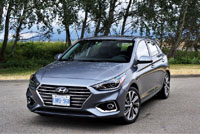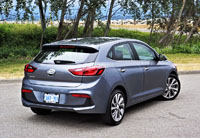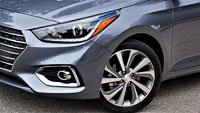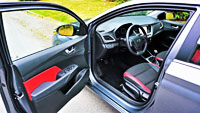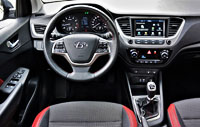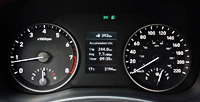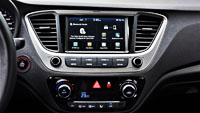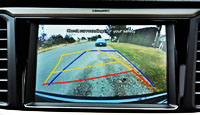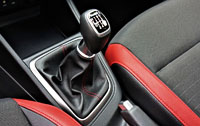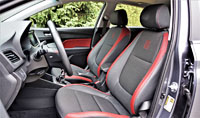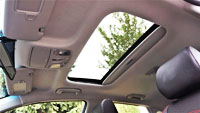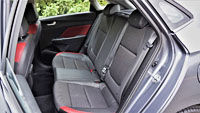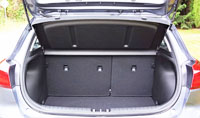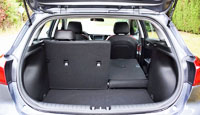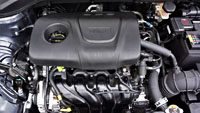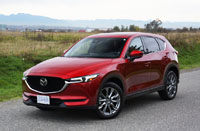
No sooner did Mazda bring its long awaited CX-5 Diesel to market and it’s now gone, or at least it doesn’t appear to be coming back for the 2020 model year or anytime in the near or distant future. As it is, their SkyActiv-D (Diesel) powerplant didn’t catch on with enough CX-5 customers, and despite only being available for 2019 (and still possible to find as a new vehicle from Mazda retailers at the time of writing) can no longer be found on the brand’s retail website.
As for its diesel engine program, it’s remotely possible Mazda may once again offer a compact or mid-size B-Series pickup truck here like it does with its Isuzu-based BT-50 in Asian, Middle Eastern, African, plus Central and South American markets (although that truck uses a 3.0-litre four-cylinder Isuzu diesel), the potential volume of such vehicles sold by Toyota, GM, Ford, and to some extent Nissan (we’ll see if the new Frontier is able to claw back neglected and therefore lost market share when it finally goes on sale) no doubt tempting, although I highly doubt it fits within their near-premium, sport-luxury North American strategy (the interior looks impressive though). Thus, we’ll probably see a greater focus on SkyActiv-G (Gasoline) technology and, who knows, maybe even a hybrid or two now that they’ve unveiled a new EV at the most recent Tokyo motor show.
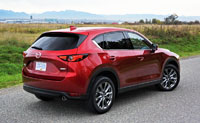
Right now you have the opportunity to purchase one of the last handful of new 2019 Mazda CX-5 Signature Diesel (or SkyActiv-D) SUVs available until they’ll only come up once in a while on the pre-owned market (and diesel owners tend to keep their cars for longer than average, so don’t hesitate if you want one sooner than later). Most buyers in this class never knew a turbo-diesel option was even available last year, despite Mazda’s SkyActiv-D being a much-anticipated new option for years amongst the engine-type’s faithful. It took a lot longer to become reality than Mazda originally planned, probably because of the fallout ensuing from Volkswagen’s 2015 Dieselgate scandal, and possibly due to little marketing fanfare only lasted a single model year. Its departure has stunned a number of diesel fans that have made their outrage known on social media, but it hasn’t even caused a buzz from the majority of Mazda owners that, as noted, didn’t even know what they were missing.
If Mazda had asked me, I would have told them not to bother with the diesel, because oil burners are now only appreciated in trucks and sometimes SUVs here in the North American markets, particularly if they’re off-road oriented. For instance, a torque-rich diesel makes sense in Jeep’s 4×4-ready Wrangler and therefore should gain some reasonable traction despite its outrageous $7,395 price tag (and that’s not even including the $1,795 required for the eight-speed automatic), but GM recently tried pulling the Chevy Colorado and GMC Canyon’s turbo-diesel over to its compact Equinox to little effect (and even tried a diesel within its car lineup). The fact Toyota, possibly the one manufacturer capable of pulling off a successful diesel option in their Tacoma, Tundra, 4Runner or Sequoia (not to mention the Land Cruiser in the U.S.), isn’t even trying says a lot, but we should nevertheless give Mazda high marks for bravery.
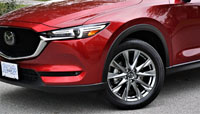
Unlike VW, which has now abandoned diesel-power altogether, Mazda’s SkyActiv-D engine actually met Canada’s strict emissions regulations for the 2019 model year, which shows that it’s cleaner and greener than any oil burner offered by the Germans, all of which killed off their diesels in our market soon after the aforementioned Dieselgate kafuffle. Mazda’s diesel would have no doubt passed 2020 regulations as well, being as they haven’t changed, but now this achievement hardly matters.
Rather than blather on about a diesel-powered 2019 CX-5 you might be able to get your hands on if you’re lucky, I’ll instead give you a quick rundown of both 2019 and 2020 models with the various model year changes. If you can get into a 2019 model, whether diesel or gasoline powered, you’ll benefit from up to $2,500 in additional incentives, incidentally, whereas the 2020 model only has about $1,000 on the hood. You can find out more about such money-saving details on our 2019 Mazda CX-5 Canada Prices page or 2020 Mazda CX-5 Canada Prices page, by the way, and after that become a CarCostCanada member to take advantage of all the savings. We inform you about manufacturer rebates, manufacturer financing and leasing deals, dealer invoice pricing info that could very well save you thousands, plus more, so make sure to find out how it works and then download our free app from the Google Play Store or Apple Store.
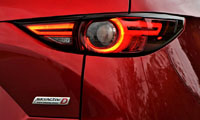
Looking back at our just-mentioned 2019 Mazda CX-5 Canada Prices page immediately shows that the 2.2-litre twin-turbo-diesel SkyActiv-D engine is only available with the top-tier Signature trim line for $45,950 (plus freight and fees). Signature trim was entirely new to the CX-5 for the 2019 model year, and uniquely pulled Mazda’s compact crossover SUV closer to the premium brand status than any other mainstream model in this class, other than maybe Buick that’s long spanned the divide between volume and luxury.
Additional 2019 CX-5 trims include the entry-level GX that starts at $27,850 with front-wheel drive (FWD) or $29,850 with all-wheel drive (AWD), the second-rung GS at $30,750 with FWD or $32,750 with AWD, and the former top-tier GT (Grand Touring in the U.S.) that starts at $37,450 before topping out at $39,450 when upgrading to its 2.5-litre turbocharged SkyActiv-G (gasoline) engine. Of note, GT and Signature trims comes standard with Mazda’s i-Activ AWD.
The CX-5 Signature, standard with the just-mentioned 2.5-litre turbo gasoline powerplant for $40,950, plus available with the aforementioned diesel, builds on the already nicely equipped CX-5 GT by adding features such as LED cabin lighting, a 7.0-inch digital primary gauge cluster, a cleaner looking frameless centre mirror, real Abachi hardwood trim on the dash and door panels, as well as dark brown Cocoa Nappa leather upholstery and trim.
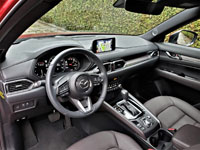
The Signature pulls plenty of features up from the GT too, including front and rear signature lighting, adaptive headlights, LED fog lamps, power-folding exterior mirrors, proximity keyless access, traffic sign recognition, two-zone auto climate control, a navigation system, 10-speaker audio with integrated satellite radio, a universal garage door opener, a 10-way powered driver’s seat, a six-way power-adjustable front passenger’s seat, and more, while leather upholstery in black or no-cost white makes the GT plenty luxurious all on its own.
Speaking of luxury, the CX-5 comes with a few finishings more likely to only be found in premium offerings, such as cloth-wrapped A pillars, premium-like padded cabin surfaces on the dash top, upper and lower instrument panel, lower console edges, door uppers front and back, and armrests all-round, while the CX-5 also boasts a plenty of brushed aluminum trim bits all over the interior, some even upgraded with knurled edging for a particularly impressive look. It’s fairly upscale switchgear from a mainstream brand, making me wonder whether Mazda will eventually try to lift itself up into premium territory in price as well as quality.
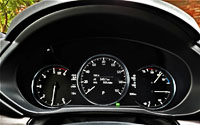 To this end, the SkyActiv-D turbo-diesel suits an upwardly mobile brand like Mazda better than some others, being that diesels have long been the stuff of Mercedes-Benz, Audi, and BMW, plus more recently Jaguar and Land Rover. I’d be remiss not to mention Volkswagen again, because not too long ago oil burners made up more than half of their Canadian sales, but now all of the just-noted German brands are on a different trajectory, embracing plug-in electric mobility at a much greater development cost and no sure promise of profits (even mighty Tesla had never managed more than two sequential quarters of profits as of this review’s publication date).
To this end, the SkyActiv-D turbo-diesel suits an upwardly mobile brand like Mazda better than some others, being that diesels have long been the stuff of Mercedes-Benz, Audi, and BMW, plus more recently Jaguar and Land Rover. I’d be remiss not to mention Volkswagen again, because not too long ago oil burners made up more than half of their Canadian sales, but now all of the just-noted German brands are on a different trajectory, embracing plug-in electric mobility at a much greater development cost and no sure promise of profits (even mighty Tesla had never managed more than two sequential quarters of profits as of this review’s publication date).
As for Mazda’s SkyActiv-D engine, it only produces 168 horsepower, but then again it puts out a very strong 290 lb-ft of torque. Such low horsepower, high torque ratios are par for the course when it comes to diesels, by the way, but it’s not like the CX-5 Signature’s standard 2.5-litre SkyActiv-G engine is without merits. Count them, 227 gasoline-fed horses and a grand total of 310 lb-ft of torque when said gasoline is 93 octane or higher. When cheaping out at the pump you can expect the same torque yet only 250 horsepower, but that’s still an impressive number for this class. What’s more, the 2020 version of this engine is capable of an even more satisfying 320 horsepower, which will make the upcoming 2021 Mazda3 AWD, just announced to receive this powertrain as an option, a serious sport sedan rivalling true luxury brands.
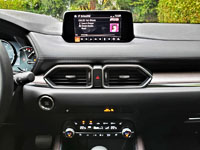
I’ve now spent at least a week with all second-generation CX-5 engines mated to the model’s all-wheel drivetrain, and can happily say the latter is well worth the extra expense when compared to the compact SUV’s base 2.0-litre four, unless fuel economy is the driving force behind your decision. This is where the twin-turbo SkyActiv-D trumps its stable mates, garnering a Natural Resources Canada rating of 8.9 L/100km in the city, 7.9 on the highway and 8.4 combined compared to the larger and more potent 2.5-litre SkyActiv-G’s 10.8 city, 8.7 highway and 9.8 combined rating. Yes, the diesel is better, but is it really $5,000 better? That’s a question you’ll need to ask yourself before plunking down the significant chunk of change needed to buy one.
Another consideration is the well-equipped CX-5 GT noted before, that for $37,450 provides most of the Signature’s premium-like features as well as a more fuel-friendly 2.0-litre SkyActiv-G four-cylinder in base trim. That smaller engine makes a reasonably strong 187 horsepower and 186 lb-ft of torque, but its expected fuel economy is nearly as good as the diesel at 9.8 L/100km city, 7.9 highway and 9.0 combined, whereas the same engine found in lesser trims with front wheel drive can achieve almost identical claimed fuel economy at a respective 9.3, 7.6 and 8.5.
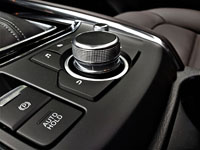
I spent a week in a 2019 CX-5 GT outfitted with the entry-level powerplant and its standard all-wheel drivetrain last year, and walked away very satisfied with its fuel-efficiency/performance compromise, not to mention its luxurious surroundings. Then again, more recently I spent a whopping three months with a newer 2.5-litre SkyActiv-G turbo-equipped 2020 CX-5 Signature and was much happier, at least with its performance and even more upscale interior, while I was also fine with its fuel economy considering the performance at hand (and particularly at foot). You’ll see a detailed review of this model shortly, but being that the review I’m current writing is about a 2.2-litre SkyActiv-D-equipped CX-5 Signature, I’ll only say, if it was a case of needing to purge an engine in order to make this compact SUV more profitable, Mazda got rid of the right one.
I should make clear that you could very well save a great deal more than the claimed rating when living with a SkyActiv-D-equipped CX-5 than at the wheel of the more potent SkyActiv-G model, because most drivers will be tempted to drive the sportier feeling gasoline variant faster. I found myself more relaxed and easy-going when behind the wheel of the non-paddle-shifter-equipped diesel than the top-line gasoline model, a factor that could also prevent potential speeding tickets with some owners. What’s more, diesel pump prices are less volatile than those for gasoline, and more often than not cheaper too.
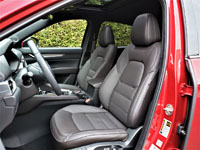
Don’t get me wrong, as the diesel delivers some significant torque off the line, and it made haste during highway passing too, but it can’t provide the level of sportiness offered by the more formidable gasoline-fed turbo-four, and thanks to the relatively quiet yet still noticeable rattle-and-hum heard ahead of the engine firewall, the diesel sounds more like a truck than the gasoline variant too. Depending on your leanings, this will be a positive or negative, while all should appreciate the added grip through the corners brought about by the Signature’s 19-inch alloy wheels.
The CX-5’s six-speed automatic transmission isn’t quite as engaging without the aforementioned paddles, and yes six forward speeds doesn’t sound as advanced as the various eight-speed, nine-speed and continuously variable transmissions being offered by others, but along with providing snappy shifts when pushing hard and smooth intervals when driving in a more relaxed state, Mazda’s SkyActiv-Drive gearbox has been very dependable when compared to some of the just-noted challengers.
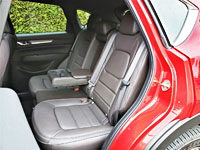
Together with the second-gen CX-5’s impressive cornering prowess, all examples I’ve driven have delivered a comfortable ride. They’ve been a tad firmer than some of their Asian and domestic competitors, due to Mazda’s performance-focused corporate credo, but this has never interfered with suspension comfort. Then again, the CX-5’s fully independent suspension is more responsive than most rivals, especially when coursing down a winding mountain road, while it also provides a level of high-speed confidence on the freeway that’s not available to the same degree from some compact SUV challengers.
Speaking of best-in-class, the CX-5’s 40/20/40 split-folding rear seatbacks make its cargo compartment more convenient than the majority of competitors too, while release levers mounted near the rear hatch opening allow the seats to lower themselves automatically, thus adding even greater ease to the loading process.
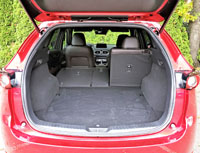
After numerous stints behind the wheel of various CX-5 trims, I can easily recommend Mazda’s compact SUV, but I won’t try to tell you which engine you should purchase. I can say, however, you’d better act fast if you like the sound of the brand’s SkyActiv-D turbo-diesel, because they’re now few and far between, and soon won’t be available at all.
Story and photo credits: Trevor Hofmann
Photo editing: Karen Tuggay

